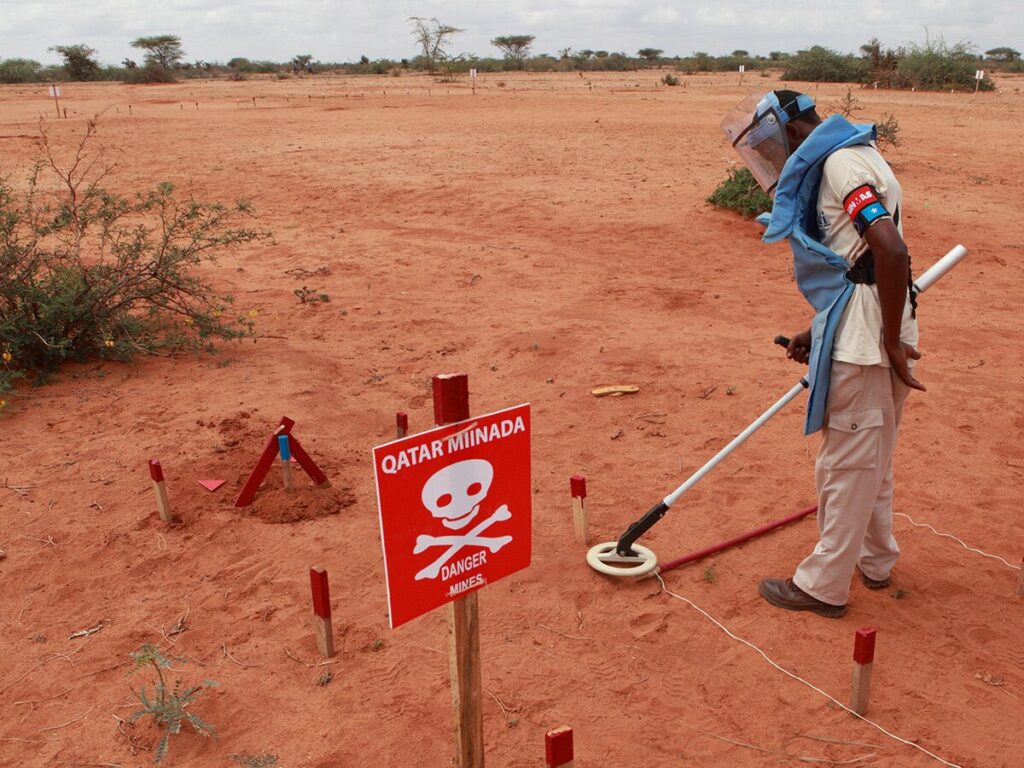Somalia has unveiled a national strategy designed to counter improvised explosive devices, the deadliest weapon used by terror group al-Shabaab.
The effort has been in the works since 2023 when experts conducted a baseline assessment of the country’s C-IED capabilities. The new strategy, announced at a September event in Mogadishu, provides a framework for adding more explosive ordnance disposal units to the Somali National Army (SNA) and improving interagency collaboration.
“This is a historic milestone for our country. Never before have we had a unified, nationally owned framework to address the IED threat,” said Awes Hagi Yusuf Ahmed, Somalia’s national security advisor. “This strategy represents a decisive shift from reactive measures to a proactive, intelligence-led approach anchored in national ownership.”
The strategy will help Somali officials quickly implement new laws and regulations, particularly those needed to control access to chemicals used in making bombs. It will establish a national electronic tracking system for precursor materials used in bombs.
It also calls for a national C-IED center and strategies to improve border security, disrupt terrorist financial networks and educate the public about the threat.
“This is not a military effort alone,” Somalia’s Defence Minister Ahmed Moallim Fiqi said. “It is a whole-of-government and whole-of-society mission to safeguard Somali lives and secure our future.”
Explosives continue to take a toll on Somali life. In 2024, more than 600 IED blasts killed or injured more than 1,400 people. In the past decade 61% of the victims were Somali civilians, according to the group Action on Armed Violence. Somalia was the fifth most affected country by IEDs globally in 2024.
Combating IEDs and other asymmetric weapons is complicated by the collaboration between al-Shabaab and Iran-backed Houthi rebels in Yemen. Authorities have warned that Houthis are planning to ship drones, explosive components and small arms to al-Shabaab. The terrorist group also acquires bomb-making materials from a variety of domestic sources, including ordnance captured on the battlefield and chemicals used in construction and farming.
“We are engaged in a bitter war with an enemy that relies on mines as a weapon of choice. These devices slow our advances, and overcoming them is critical to liberating more areas,” Omar Ali Abdi, Somalia’s state minister of the Ministry of Defence, said in May during a handover ceremony to accept protective gear and training kits for Soldiers.
The United Nations has led the way in helping Somalia improve its C-IED expertise. The U.N. Mine Action Service (UNMAS) has trained and equipped 61 SNA explosive ordnance disposal (EOD) teams and led train-the-trainer courses to ensure that the knowledge is spread throughout the military. UNMAS also trained 21 EOD teams in the Somali Police Force.
U.N. Special Representative for Somalia James Swan said the new national strategy is the product of “Somali leadership, developed with determination and foresight.”
“The challenge now lies in sustained implementation,” Swan said. “We are confident that with continued national resolve, and with coordinated and focused support from international partners, this strategy can strengthen Somalia’s capacity to mitigate the threat of IEDs, protect the Somali people, and reinforce peace and security. This is an important step.”

